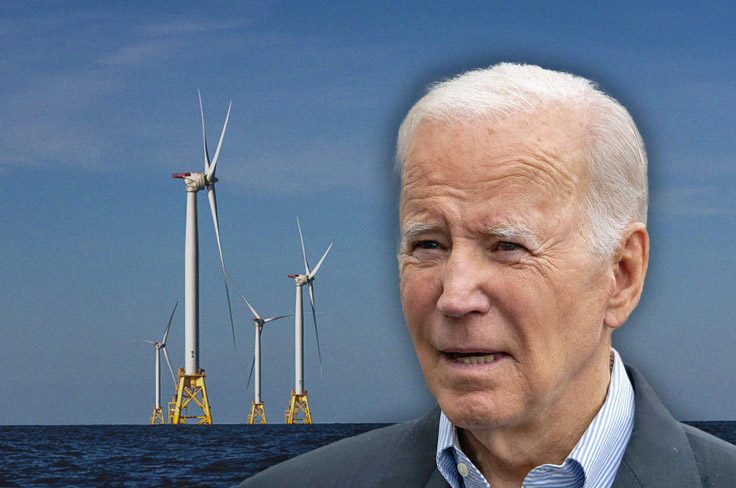State, federal officials say increase in green power, decrease in gas and coal could bring catastrophe

It’s a warm summer night in Texas, and as the sun goes down, the wind eases to a calm breeze. There’s nothing extreme about the weather, but the pleasant conditions could present a big problem for the state’s green power grid.
Texas is one of many states that have seen fossil fuel plants close in favor of green power generation alternatives, such as wind and solar. But those alternatives are less reliable than their gas and coal counterparts—wind turbines need strong gusts to generate power at full capacity, and solar panels don’t work at night. As a result, state and federal officials are warning residents in Texas and elsewhere that high summer temperatures, combined with low winds at night, could bring power blackouts.
“I’m afraid to say it, but I think the United States is heading towards a catastrophic situation,” Federal Energy Regulatory Commission member Mark Christie said during a May Senate hearing. “The problem is not the addition of wind and solar, it’s the subtraction of dispatchable resources like coal and gas.” North American Electric Reliability Corporation president Jim Robb echoed Christie’s sentiment during an April press conference, calling the newfound reliance on green power generation “highly concerning” given the increased demand associated with “electrification policies and electric transportation.”
President Joe Biden has thus far ignored those warnings as he pushes forward with plans to eradicate fossil fuels from U.S. power generation by 2035, a move the White House says is necessary to “tackle the climate crisis.” Should green energy power grids bring unreliable electricity and air conditioning, Biden’s green revolution would almost certainly spark widespread political backlash.
In addition to Texas, grid operators in the Midwest are sounding the alarm over potential summer and winter power outages, citing the “accelerated retirements” of fossil fuel plants. California, meanwhile, has already pushed residents to reduce their energy consumption to avoid blackouts—in September, the state urged electric car drivers to stop charging their vehicles due to power grid strain. A majority of California’s electricity comes from green sources.
For Daniel Turner, founder and executive director of energy advocacy group Power the Future, Biden’s planned transition to green power generation shows Americans are “in the era of insanity when it comes to our policies.”
“We rely on solar panels that at best only work half the time and try to convince everyone it’s normal,” Turner told the Washington Free Beacon. “The insanity of wind and solar generation, the insanity that these power sources are going to maintain the same quality of life and the same abundance of life—it’s laughable.”
The White House did not return a request for comment.
While Biden is moving forward with plans to greenify the nation’s power grids, some lawmakers are pushing back. Federal Energy Regulatory Commission member James Danly, for example, has called for the agency to restrict state subsidies for green energy power generation. But federal energy law mostly leaves those decisions to the states, prompting Texas officials to float their own reforms. Texas Public Utility Commission chairman Peter Lake earlier this month stressed the need for the state to “incentivize building more dispatchable generation,” a reference to power sources such as natural gas and coal that can be turned on and off at the flip of a switch.
“We’ve got lots of renewables, but at the end of the day, zero wind times infinity windmills is zero electricity,” Lake said during a May press conference. “And the sun sets every night.”
Plants that produce nearly 30 percent of America’s coal-fired power are scheduled to retire by 2029, a trend that Biden has worked to accelerate. The Democrat’s Environmental Protection Agency last week unveiled emission standards that require coal and gas plants to slash their carbon emissions a whopping 90 percent between 2035 and 2040. To meet the near-impossible benchmark, the agency is advising plants to use carbon capture technology to store their emissions underground before they hit the atmosphere.
That technology, however, is both extremely expensive and largely unproven. No power plant in the country uses it, and the technology requires plants to construct pricey pipelines to funnel emissions underground. The agency’s reliance on carbon capture suggests its rule is meant to accelerate the closure of coal and gas power plants, Heartland Institute environmental policy expert Sterling Burnett argued.
“By mandating the use of technology that doesn’t really exist on fossil fuel power plants, Biden and company are bringing the country to its knees, threatening to force the closure of the majority of reliable baseload and peaking power plants,” Burnett said in a statement after the administration unveiled its rule.
Original News Source
Running For Office? Conservative Campaign Management – Election Day Strategies!
